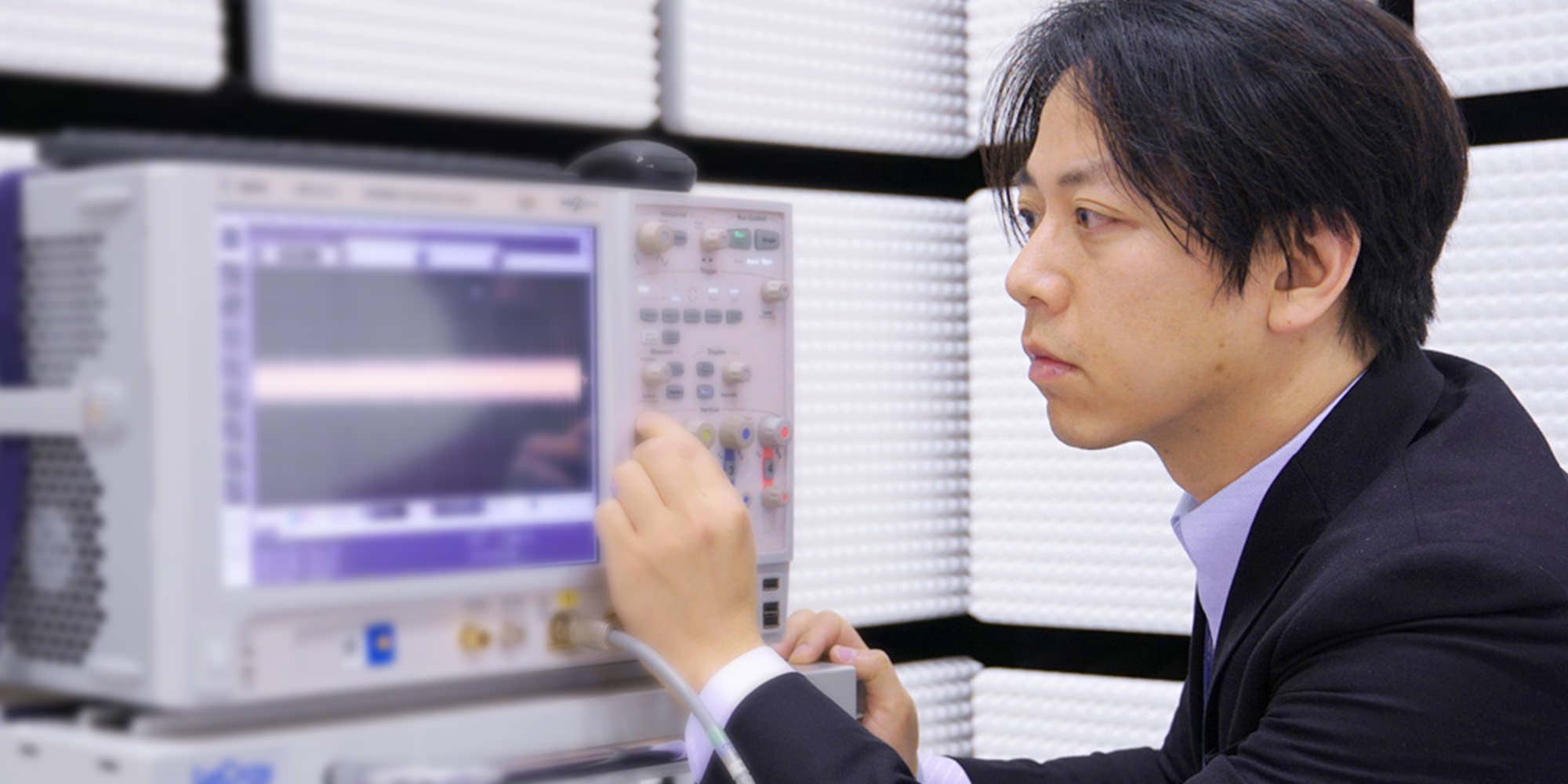
Research Manager
WU IfongPh.D. (Engineering)
After earning his Ph.D. (Engineering) degree, he joined the National Institute of Information and Communications Technology (NICT) in 2007. He is engaged in research on the electromagnetic compatibility of radio communications systems.
- Home
- Researchers
- WU Ifong
Realization of a Safe Electromagnetic Environment for a Smart City
Study on Generation Mechanism of Electromagnetic Noise Generated from Energy-Saving Devices
Introduction
Because of recent natural disasters, people's awareness of energy conservation has increased. The use of environmentally friendly photovoltaic (PV) power generation systems and the introduction of energy-saving devices such as LED lighting are increasing. To achieve low-power-consumption, high-efficiency energy-saving devices, such devices are equipped with switching regulators. However, when the switching regulator of the device switches between on and off modes, noise is generated between the switching frequencies and its harmonic frequencies. This noise not only flows through power lines of the device but is also radiated towards the outside and can have adverse effects on other electronic devices and radio equipment. In addition, as a consequence of the proliferation of the latest information and communications technologies such as Internet of Things (IoT) and machine-to-machine (M2M) technologies, a smart city in which all devices are connected to the internet is being realized. If electromagnetic noise is generated from PV power generation systems and energy-saving devices, which are major components of a smart city, the communication function of the smart city itself may be compromised.
To contribute to the realization of a more reliable social infrastructure, the Electromagnetic Compatibility Laboratory is conducting R&D on technology to accurately elucidate the generation mechanism and intensity of electromagnetic noise through numerical analysis and electromagnetic field measurement and also on technology to quantitatively evaluate the effect of noise on communications and broadcasting. As an example, the following is an overview of research results on PV power generation systems and LED lighting.
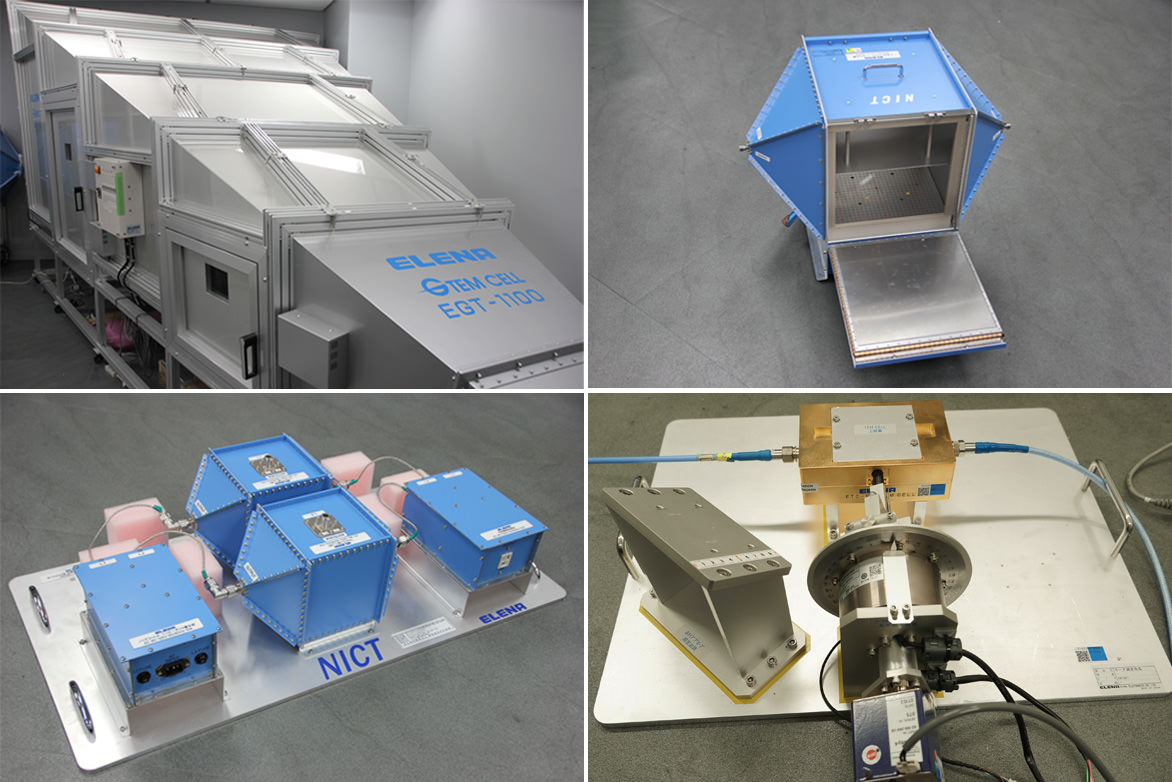
GTEM cell (top left), TEM cell (top right),
conducted disturbance measurement system (lower left), and probe calibration system (lower right)
Radiation mechanism of electromagnetic noise from PV power generation systems
In a PV power generation system, the direct current (DC) generated by a PV panel is converted into alternating current (AC) by a grid-connected power conditioner (GCPC) and then sent to a distribution line. The electromagnetic noise generated when converting DC to AC with the GCPC has become problematic. This noise not only flows backward into the DC cable and PV panel of the PV power generation system but also radiates towards the outside and can have adverse effects on other electronic devices and radio equipment. Toward the goal of preventing this electromagnetic noise from interfering with surrounding broadcast and radio communications, CISPR (Comit? International Sp?cial des Perturbations Radio?lectriques) has conducted a long-term study on how to measure electromagnetic noise radiated from the GCPC and on international arrangements for the noise allowance range.
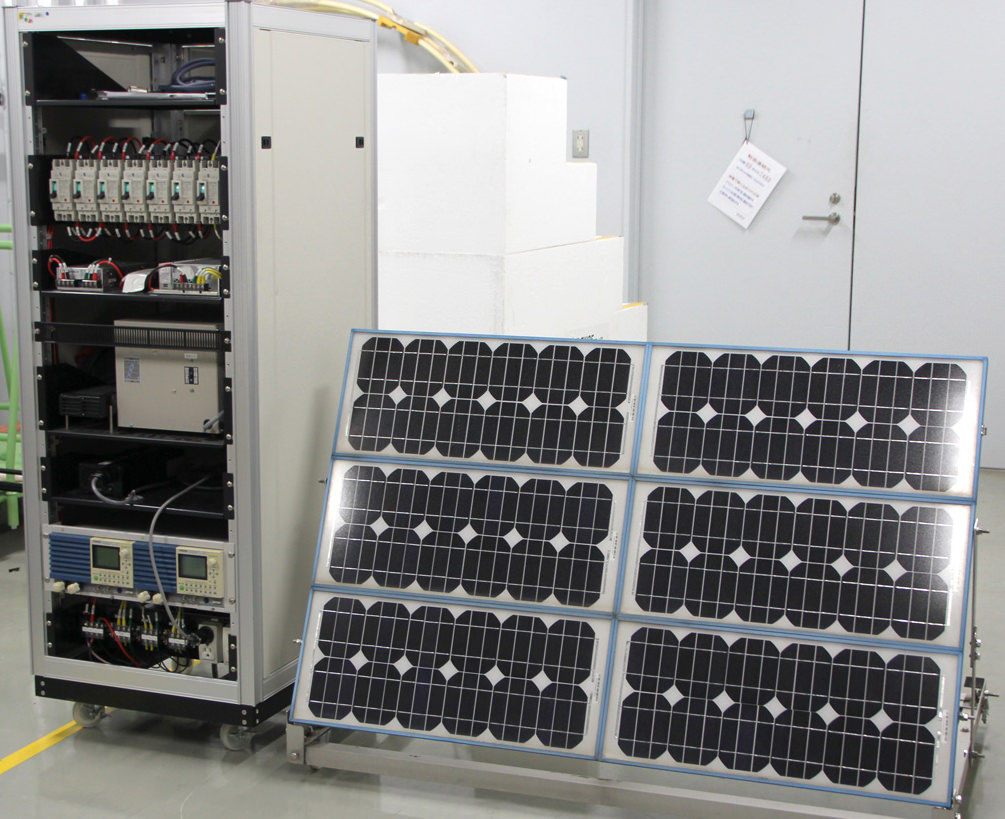
Figure 1. PV power generation system
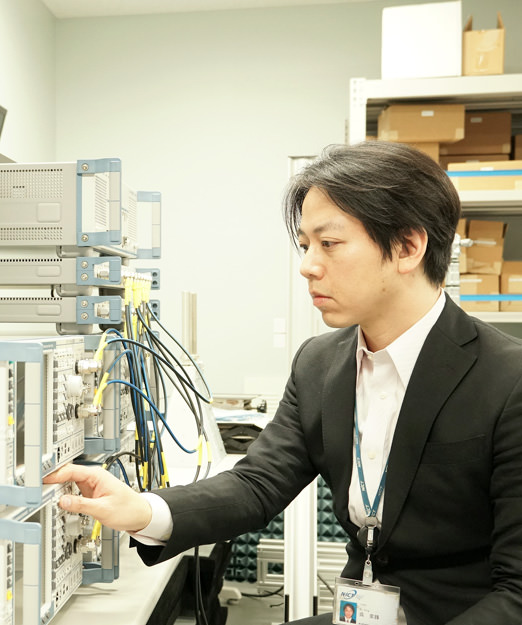
Senior Researcher Wu at work
In response to these socially important issues, the Electromagnetic Compatibility Laboratory conducted research on the generation mechanism of electromagnetic noise in PV power generation systems. As a result, we identified the dominant factors in the generation of electromagnetic noise and clarified the differences in electromagnetic noise characteristics depending on the configuration of the PV power generation systems. An example of this is given below. Figures 2 (a) and 2 (b) show a measurement system that simulates the PV panel (the part that contributes to electromagnetic noise radiation) of the PV power generation system. Figure 2 (c) shows the measured magnetic field strength of the electromagnetic noise. As a result, the grounding wire of the PV power generation panel was found to affect the electromagnetic noise radiation characteristics. According to this result, a large current loop may form between the power line, the PV panel, the grounding wire, and the ground, and resonance may be caused by the wiring layout of the PV power generation system. In addition, a similar tendency was confirmed by a numerical calculation of the electromagnetic field. Therefore, the wiring layout is important in reducing the electromagnetic noise from PV power generation systems.
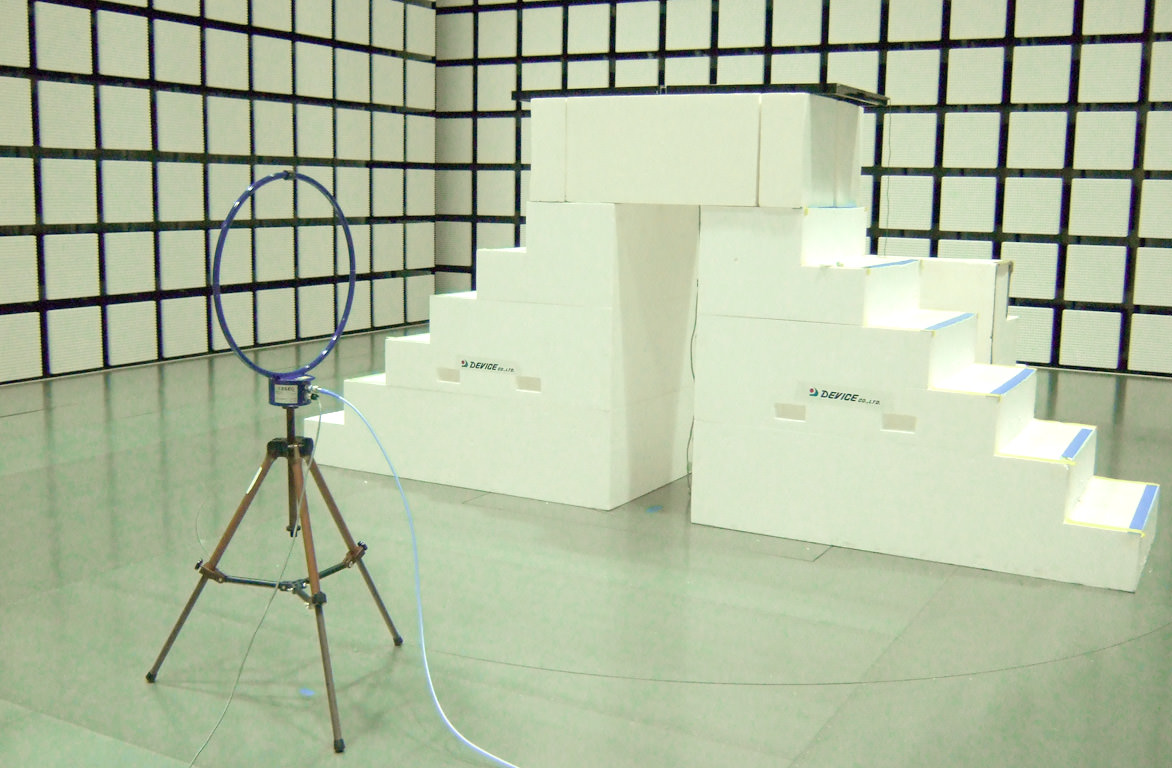
(a) Measurement system of the electromagnetic noise radiated from the PV power generation system
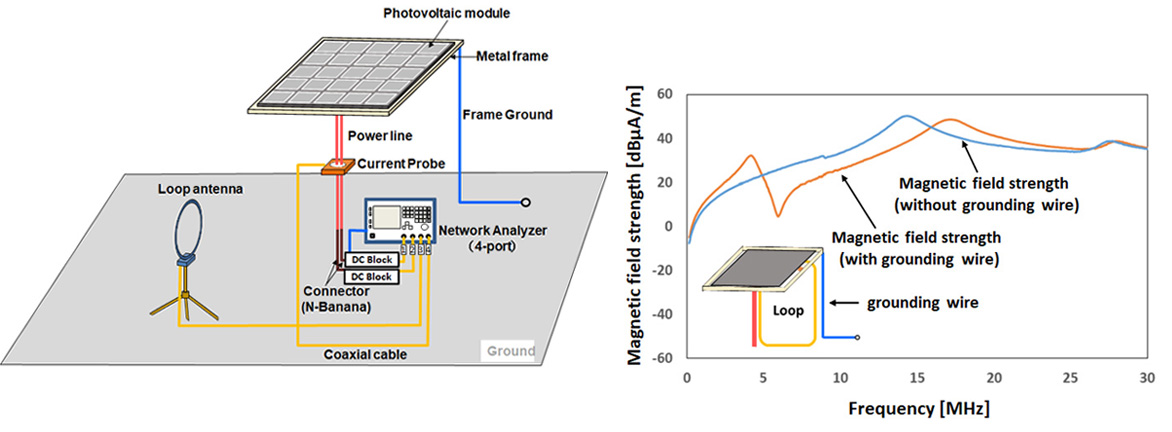
(b) Schematic diagram of the PV panel of the PV power generation system model with a grounding wire, (c) Effect of a grounding wire on electromagnetic noise radiated from the PV power generation system
Figure 2. Electromagnetic noise radiated from the PV power generation system
Effect of noise radiated from LED lighting on communication and broadcasting and LED noise identification technology
LED lighting generates electromagnetic noise owing to the incorporation of a switching circuit that converts AC from commercial power sources into DC. Shortly after LED lighting became widely available, there were reports that electromagnetic noise generated by the LED lighting interfered with broadcast reception. The Electromagnetic Compatibility Laboratory conducted research on the mechanism of LED noise generation and interference with the aim of creating an electromagnetic environment in which energy-saving devices can be used safely and securely. The outline of this research is as follows.
Figures 3 and 4 show a system for measuring the magnetic field radiated from a lighting duct rail installed with LED lighting. Figure 5 shows the distribution of magnetic field radiated from a lighting duct rail installed with LED lighting. As a result, the noise is seen to radiate not only from the LED lighting, which is the noise source, but also from the lighting duct rail (= power supply line). These results provide important information for determining how far apart LED lighting and its power lines should be from the reception antennas for radio communications and broadcasting that are subject to interference from electromagnetic noise. We also focused on the time variation of LED noise and clarified, by noise statistical processing, the permissible LED noise conditions under which normal reception of terrestrial digital broadcasting is possible.
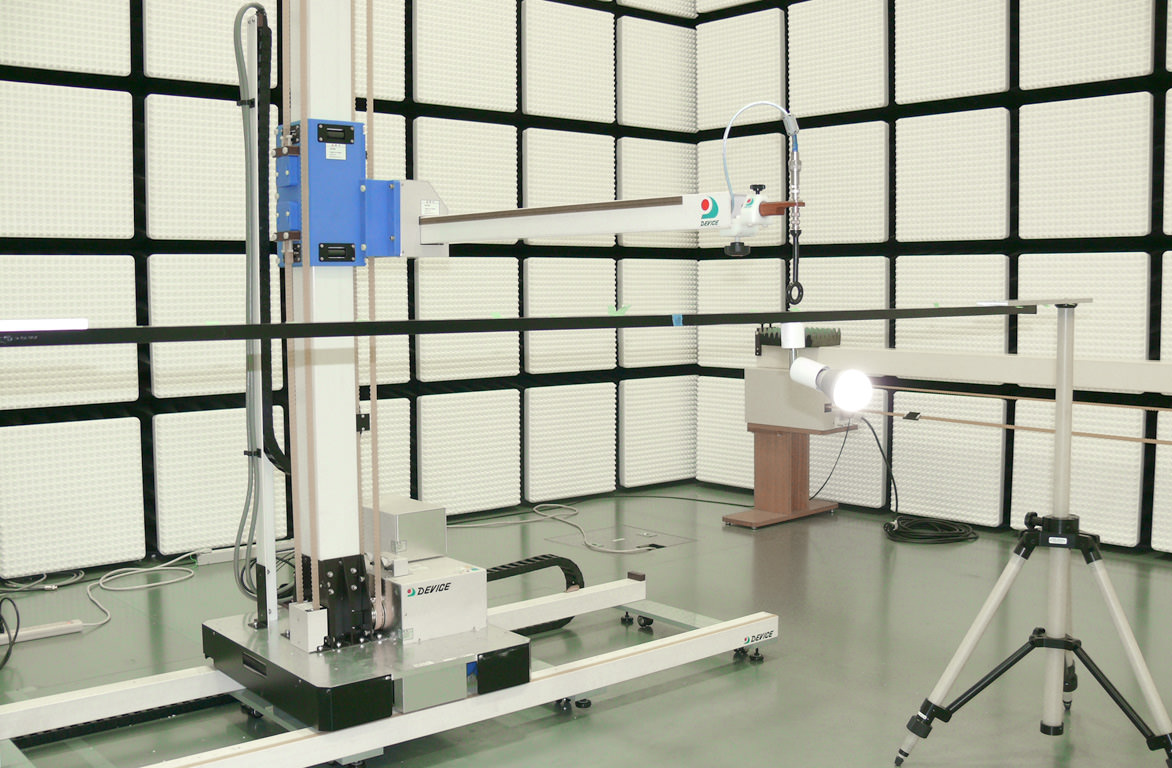
Figure 3. Measurement of magnetic field radiated from a lighting duct rail installed with LED lighting
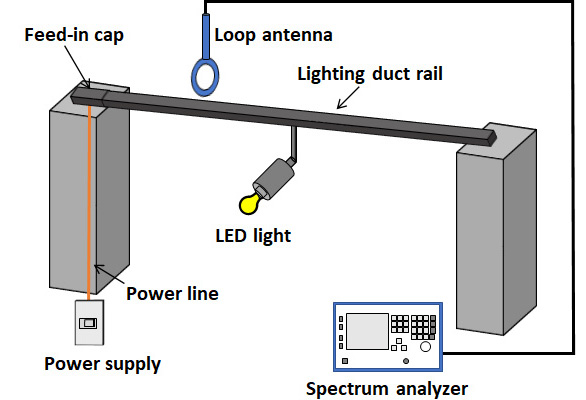
Figure 4. Schematic diagram of electromagnetic noise measurement from a lighting duct rail installed with LED lighting
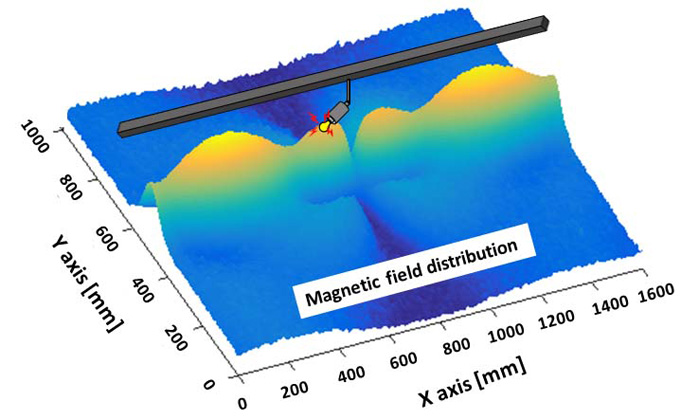
Figure 5. Distribution of magnetic field radiated from a lighting duct rail installed with LED lighting
Next, we introduce a technique of identifying electromagnetic noise. When reception is disrupted by electromagnetic noise from LED lighting, it is important to locate the source of the noise. However, in general, multiple LED lights are used at the same time, and it is difficult to identify which LED light is the main cause of reception interference even if electromagnetic noise measurement is performed at the location of reception interference. Therefore, we have developed an identification technique that utilizes the correlation between LED noise and light intensity. By comparing the time variation of electromagnetic noise radiated from multiple LED lights with the period of the light intensity of a specific LED light, it is possible to identify the source of the electromagnetic noise. This concept can be applied to the search for electromagnetic noise using physical quantities other than light intensity.
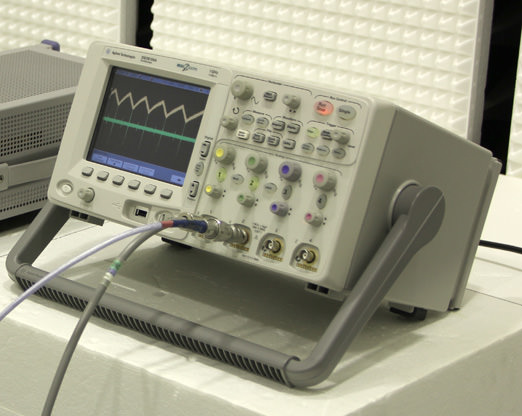
Measurement of radiated noise and light intensity from LED lighting
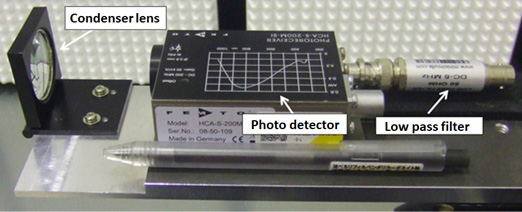
Device for measuring light intensity
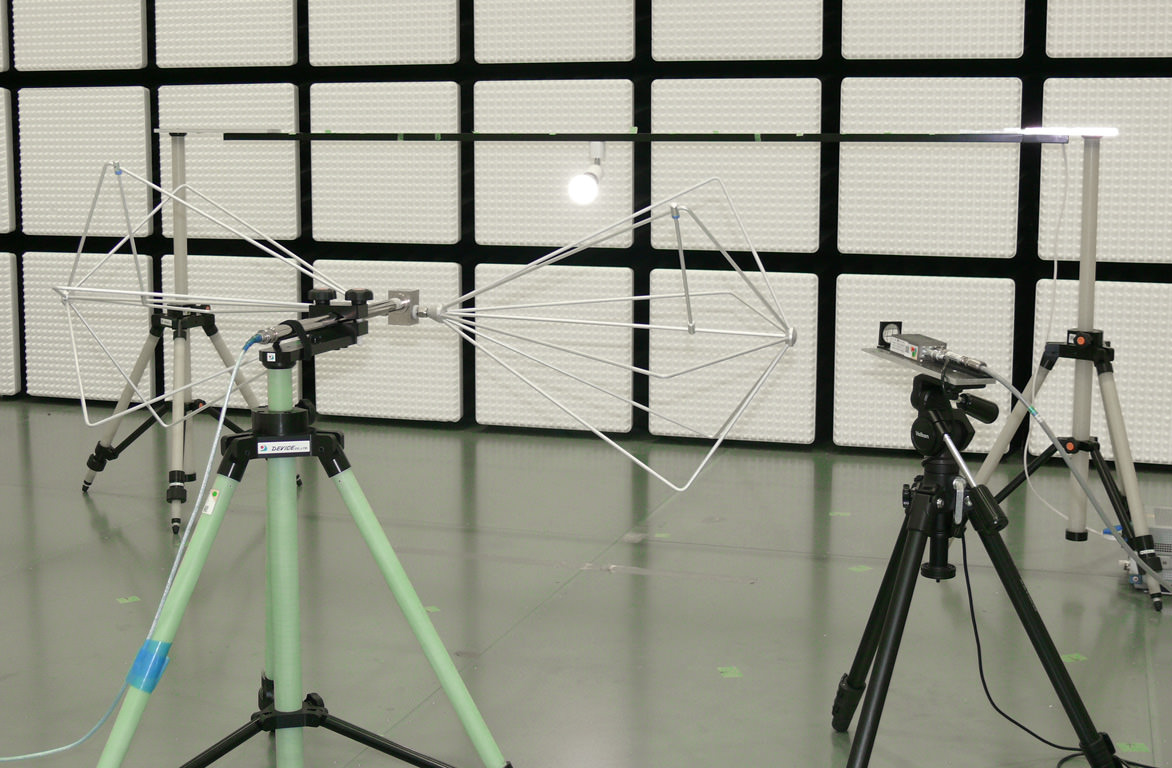
Figure 6. Measurement system for identifying LED noise using a photodetector
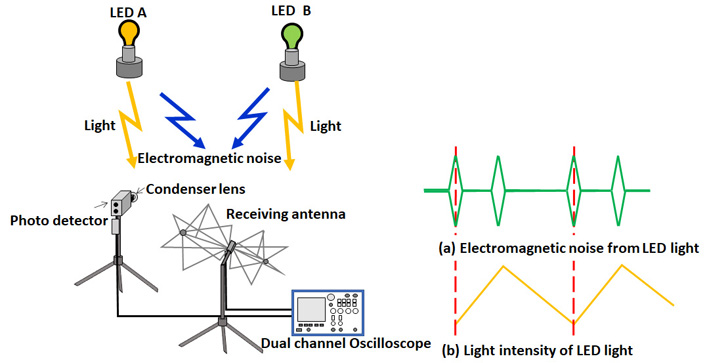
Figure 7. Schematic diagram of LED noise identification measurement using a photodetector (left), and an image of the time variation of radiated noise and light intensity from LED lighting (right)
Future prospects
With the expansion of the use of energy-saving devices, the use of energy-saving devices in medical institutions and long-term care facilities is also increasing rapidly. Electromagnetic noise from energy-saving devices connected to a smart city can cause serious problems, such as the malfunction of not only communication devices but also life-saving medical devices. With the aim of building and maintaining an appropriate electromagnetic environment, the Electromagnetic Compatibility Laboratory is conducting R&D on technology for analyzing and evaluating electromagnetic noise generation mechanisms to provide a technical basis for reducing electromagnetic noise and avoiding electromagnetic interference, contributing to the future development of communication technology to meet social needs. In addition, the Laboratory also aims to develop technologies to prevent the above-mentioned problems.
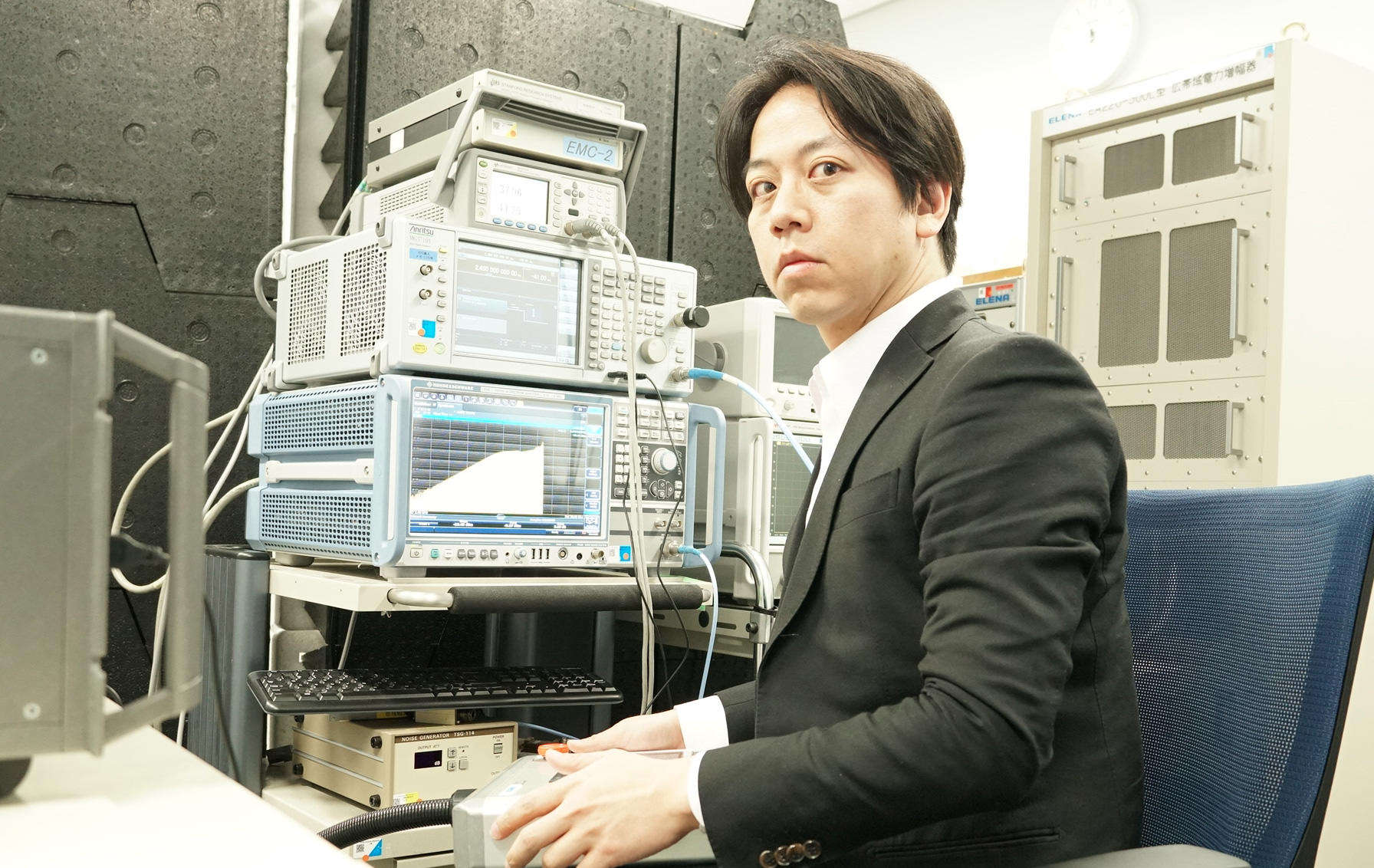
In the electromagnetic interference (EMI) testing laboratory
- Home
- Researchers
- WU Ifong